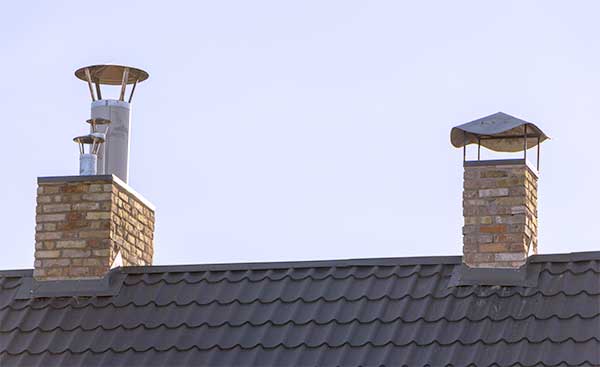If you live in Toms River, we thankfully still have some time before we all have to think about chilly nights, warm cozy sweaters, and starting a fire in our fireplaces, but it’s not too early to think about scheduling your chimney service. Every chimney should be inspected to ensure they are properly cleaned once a year prior to burning anything in your stove or fireplace by a reputable company specializing in chimney service in Toms River, like Carlin Chimney and Duct Service. Neglecting this important task could lead to harmful fumes and potentially dangerous situations. Let’s review the parts of a chimney to further understand the importance of proper chimney servicing.
Flue
This is the chute through which smoke and gases travel in order to exit your home. Some brick fireplaces have double flues while metal fireplaces have only one. Checking the flue for cracks, warping, or other blemishes is common during an inspection. Creosote, a regular byproduct of fires in fireplaces and stoves, will build up in your flue and should be cleaned out when it is more than 1/8 inch thick. The potential for disaster is monumental when creosote is not cleaned out. Creosote is flammable so build-up of this material is very dangerous.
Liner
A protective barrier in the flue. The chimney liner protects your chimney from the heat of a fire. Part of your yearly inspection will be to make sure there are no cracks or damage to your chimney liner. If found, they must be repaired or the liner replaced in order to keep your chimney safe and free from corrosion.
Cap
Found on the top of the chimney, this relatively inexpensive item keeps everything from rain to animals out of your chimney. The secondary duty of the chimney cap is to keep embers from floating out of the chimney onto your roof creating a fire. When installed properly, not only do they not cause a draft, a common misconception, but can actually help fix a draft problem.
Flashing
A metal barrier protecting your home from rain and snow. It is placed where the chimney meets the roof and without it, your home would be subject to damage with even the slightest bit of bad weather. Annual chimney inspections should also check the flashing for any wear and tear to ensure a leak-free seal. If there is any rust or imperfections noted on your flashing, it should be replaced to ensure a leak-free chimney.

Crown
Where the cap covers the top of the flue, the crown covers the entire chimney. Waterproof materials like metal, concrete, or stone are the only products that should be used to construct a crown. As with all the other parts of the chimney, the crown should be looked at routinely to verify it is free of cracks, holes, and other damage or wear.
Damper
The part of the chimney that keeps inside air inside and outside air outside when closed. It should be kept closed when the fireplace is not in use to keep small animals out of your chimney. When open, it allows the smoke to escape the chimney and out the flue.
With all the parts of a chimney, it’s easy to see why professional chimney service in Toms River is important
You can sometimes check individual parts of your chimney yourself, but we recommend calling in a professional like Carlin Chimney for chimney service in or around Toms River.